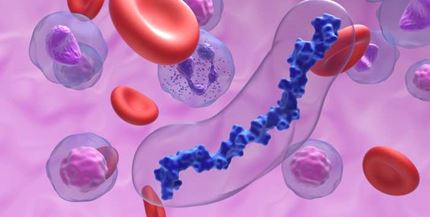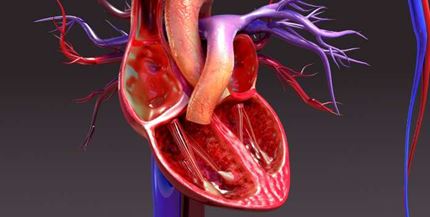In this issue of Vascular Rounds Fall 2017, several specialists join together to discuss topics that include Endovascular Therapy for Blunt Aortic Trauma, Shunting in Civilian Extremity Trauma, Pediatric Vascular Trauma, A RESCUE Stent for Non-Compressible Traumatic Hemorrhage, Traumatic Innominate Artery Injury, and Embolization of Arterial Injuries.
Educational objectives:
Upon completion of this activity, participants should be
able to:
- Discuss the causes and treatments for blunt aortic
injuries/aortic transection.
- Explain the challenges in treating pediatric vascular trauma
injuries
- Identify the benefits and challenges in using vascular
shunts to treat vascular trauma injuries.
Reading Resources:
- Rutherford’s Vascular Surgery Textbook. 8th
edition. Elsevier Saunders. Philadelphia, PA 2014
- Demetriades D, Velmahos GC, Scalea TM, et al.
Diagnosis and treatment of blunt thoracic aortic injuries: changing
perspective. J Trauma 2008; 64: 1415
- Azizzadeh A, Kehani K, Miller CC, et al. Blunt
traumatic aortic injury; initial experience with endovascular repair. J Vasc
Surg 2009; 49: 1403
- Subramanian A,
Vercruysse G, Dente C, Wyrzykowski A, King E, Feliciano DV. A decade’s
experience with temporary intravascular shunts at a civilian level I trauma
center. J Trauma (2008) 65(2):316–24; discussion 324–6.
doi:10.1097/TA.0b013e31817e5132
- Abou Ali AN, Salem
KM, Alarcon LH, Bauza G, Pikoulis E, Chaer RA et al. Vascular Shunts in
Civilian Trauma. Front Surg. (2017) 4:39. doi:10.3389/fsurg.2017.00039
- Tan TW, Joglar FL,
Hamburg NM, Eberhardt RT, Shaw PM, Rybin D, et al. Limb outcome and mortality
in lower and upper extremity arterial injury: a comparison using the National
Trauma Data Bank. Vasc Endovascular Surg (2011) 45(7):592–7.
doi:10.1177/1538574411415125
- Inaba K, Aksoy H,
Seamon MJ, Marks JA, Duchesne J, Schroll R, et al. Multicenter evaluation of
temporary intravascular shunt use in vascular trauma. J Trauma Acute
Care Surg (2016) 80(3):359–65. doi:10.1097/TA.0000000000000949
- Kirkilas M, Notrica D, Langlais C, Muenzer J.
Outcomes of arterial vascular trauma in pediatric patients. Journal of
Pediatric Surgery. 2016;51:1885-1890.
- Leeper CM, Neal MD, McKenna CJ, Gaines BA.
Trending Fibrinolytic Dysregulation: Fibrinolysis Shutdown in the Days After
Injury Is Associated With Poor Outcome in Severely Injured Children. Annals of
Surgery. 2017;3:508-515.
- Barquet A, Gelink A, and Giannoudis PV. Proximal
femoral fractures and vascular injuries in adults: Incidence, aetiology and
outcomes. Injury. 2015;46(12):2297-313.
- Craxford S, Gale M, and Lammin K. Arterial Injury
to the Profunda Femoris Artery following Internal Fixation of a Neck of Femur
Fracture with a Compression Hip Screw. Case reports in orthopedics.
2013;2013(181293.
- Ge PS, Ng G, Ishaque BM, Gelabert H, and de
Virgilio C. Iatrogenic pseudoaneurysm of the superior gluteal artery presenting
as pelvic mass with foot drop and sciatica: case report and review of
literature. Vascular and endovascular surgery. 2010;44(1):64-8.
- Roth JS, and Newman EC. Gluteal compartment
syndrome and sciatica after bone marrow biopsy: a case report and review of the
literature. The American surgeon. 2002;68(9):791-4.
- Corbacioglu KS, Aksel G, and Yildiz A. Ruptured
superior gluteal artery pseudoaneurysm with hemorrhagic shock: Case report.
Turkish journal of emergency medicine. 2016;16(1):26-8.
- Griselli F, Calvagna C, Sgorlon G, Zamolo F,
D'Oria M, Chiarandini S, and Adovasio R. Management of an Iatrogenic
Pseudoaneurysm of the Superior Gluteal Artery by Percutaneous Ultrasound-Guided
Thrombin Injection: A Case Report. Annals of vascular surgery. 2017;38(317.e9-.e11.
- Spratt JR, Bretzman PA, Lafferty PM, and McGonigal MD.
Gluteal Compartment Syndrome: Successful Management with Combined
Angioembolization and Surgical Decompression. Minnesota medicine.
2016;99(3):51-2.
Disclosures:
Drs. Ali, Avgerinos, Mohapatra, Sachdev, Washington, Leers,
McEnaney, and Eid have reported no relevant relationships with any
entities producing health care goods or services.
Dr. Singh has financial interests with the following
any entity or entities producing health care goods or services as
indicated below:
- CE Speakers’ Bureau: Medtronic Venous
Dr. Tillman has financial interests with the following
any entity or entities producing health care goods or services as
indicated below:
- Grant/Research Support: Department of Defense
All presenters disclosure of relevant financial
relationships with any entity producing, marketing, re-selling, or distributing
health care goods or services, used on, or consumed by, patients is listed
above. No other planners, members of the planning committee, speakers,
presenters, authors, content reviewers and/or anyone else in a position to
control the content of this education activity have relevant financial
relationships to disclose.
Accreditation Statement:
The University of Pittsburgh School of Medicine is
accredited by the Accreditation Council for Continuing Medical Education (ACCME)
to provide continuing medical education for physicians.
The University of Pittsburgh School of Medicine designates
this enduring material for a maximum of .5 AMA PRA Category 1
Credits™. Each physician should only claim credit commensurate with
the extent of their participation in the activity. Other health care
professionals are awarded (0.05) continuing education units (CEU) which are
equivalent to .5 contact hour.
For your credit transcript, please access our website 4
weeks post-completion at http://ccehs.upmc.com and follow the link to the
Credit Transcript page. If you do not provide the last 5 digits of your SSN on
the next page you will not be able to access a CME credit transcript. Providing
your SSN is voluntary.
Release Date: 11/2/2017 | Last Modified On: 11/2/2017 | Expires: 11/2/2020


